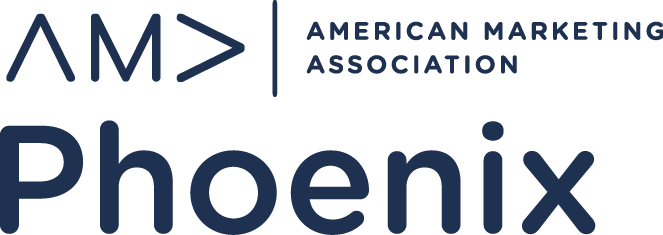- May 15, 2025
- Posted by: Featured
- Category: "Expert Roundups"

Re-Engaging Inactive Customers:17 Creative Marketing Automation Strategies
Discover proven strategies to reconnect with inactive customers and boost your business growth. This article presents a comprehensive collection of creative marketing automation techniques, backed by expert insights from industry leaders. From personalized surveys to interactive storytelling, these innovative approaches offer practical solutions to re-engage dormant users across various sectors.
- Retarget Unsubscribed Customers for Profitable Reactivation
- Interactive Story Revives Dormant SaaS Users
- Simple Email Sequence Rekindles Garage Door Customers
- Personalized Survey Drives Tailored Re-engagement Offers
- Behavioral Triggers Spark Relevant User Reactivation
- Missing RSVP Series Recovers Corporate Event Registrants
- SMS Loyalty Program Entices Customers Back
- Empathetic Reset Sequence Reignites Product Interest
- Gamified Puzzle Emails Unlock Customer Discounts
- Anonymous Feedback Streamlines Product Launch Process
- Localized WhatsApp Campaign Revives Solar Leads
- Device Upgrade Cycle Triggers Trade-In Reminders
- Personalized Product Care Tips Reactivate Customers
- Before and After Photos Reconnect Remodeling Clients
- Tailored VPN Onboarding Boosts User Engagement
- Real-Time Website Activity Triggers Personalized Emails
- Multi-Channel Approach Reactivates Disengaged Users
Retarget Unsubscribed Customers for Profitable Reactivation
One of the most valuable segments of a business’s email list is hiding in plain sight, which everyone ignores: customers who once bought, then clicked “unsubscribe” and can no longer be contacted.
By being able to re-target and re-engage this group, you’re reactivating people who are much more likely to buy again compared to any new leads.
There are two ways you can do this:
1. Take a client’s email list and manually segment all past customers who unsubscribed (ideally this number is in the thousands). Create a Facebook or Google Ads retargeting list and run a campaign with the goal of getting them to enter their email through a web form again and rejoin your house email list. Make sure your system automatically re-opts in their email.
2. Automate adding them to a retargeting list when a customer unsubscribes and run the same play. A lot of CRM systems allow you to use webhooks to automatically add and remove people to remarketing lists like this.
Over time, this routinely brings back about one in four unsubscribed customers. More importantly, once they are back on the email list, these returning customers will buy again at a far higher rate when compared to cold leads. They have already trusted the brand once, so rekindling this group often turns dormant emails into some of the most profitable customers on the list that were completely ignored before.
 Andrew Pfund
Andrew Pfund
Growth Marketer, Scale and Prosper
Interactive Story Revives Dormant SaaS Users
Okay, so one of my favorite re-engagement campaigns involved turning “dormant” customers into… well, participants in a choose-your-own-adventure story! We had a segment of users who hadn’t interacted with our platform (a SaaS for project management, by the way) for about 90 days. Instead of just blasting them with a generic “we miss you” email, we tried something a little different.
We created a series of three emails, each presenting a different challenge or pain point that our software addressed. The first email posed the question: “Is your team spending too much time in endless meetings?” with three possible answers linking to different parts of our platform:
1. “Yes! We’re drowning in them!” (linked to features for asynchronous communication and task delegation)
2. “Sort of, but mostly we struggle with staying organized.” (linked to project tracking and kanban board features)
3. “Nope, meetings are fine, but hitting deadlines is a nightmare.” (linked to time tracking and progress monitoring tools)
Each subsequent email in the series followed the same format, presenting a new challenge based on the user’s previous click. So, if someone clicked on the “drowning in meetings” option, the next email would focus on specific features to solve that problem, again offering choices and links to relevant resources and tutorials.
The outcome was pretty impressive. We saw a 17% reactivation rate from that segment, which was a significant jump compared to our standard re-engagement emails (which typically hovered around 5%). But more importantly, the quality of engagement was much higher. These reactivated users were actively exploring specific features that addressed their pain points, leading to increased product usage and, ultimately, higher conversion to paid plans.
The key, I think, was making the re-engagement process interactive and personalized. It wasn’t just about reminding them we existed; it was about understanding their specific challenges and offering tailored solutions in a fun, engaging way. It also gave us valuable insights into why those users had become disengaged in the first place, which helped us refine our onboarding process and improve our overall user experience going forward.
It reminded us that even with automation, a touch of creativity and a focus on individual needs can make all the difference.
 Lata Tewari
Lata Tewari
CMO, Webuters Technologies Pvt Ltd
Simple Email Sequence Rekindles Garage Door Customers
I built a simple three-step email sequence and sent it to any customer who had not booked in 18 months but had spent over $300 with us before. The first message simply said, “Still holding up?” with a photo of a busted spring and a 30-word note. If they clicked, they received a second email with a one-click scheduler and a $29 tune-up option. The third message, two weeks later, offered to check their opener for free if they booked before the end of the month. I ran that campaign to 174 emails, and 46 people clicked. We booked 19 jobs and made $6,080 from parts and repairs.
That campaign worked because it sounded like something I would actually say. No fluff, no huge discount, just a reminder that we still had their back if the door started acting up again. I timed it to send on Wednesdays around 4:00 p.m., which is when people are starting to think about their weekend plans. Every piece felt like a small nudge, not a pitch. That workflow is still running in the background, and it generates around $1,800 per month without me lifting a finger. I wish I had implemented it years earlier.
 Craig Focht
Craig Focht
Cofounder & CEO, All Pro Door Repair
Personalized Survey Drives Tailored Re-engagement Offers
One creative way I used marketing automation to re-engage inactive customers was through a “We Miss You” reactivation series triggered after 90 days of no engagement. The workflow started with a personalized email acknowledging the break, followed by a short survey asking what they needed now, and then delivered tailored offers or content based on their response.
For example, if someone indicated they were too busy, they’d get a time-saving feature guide. If they clicked “shopping around,” they received a competitor comparison or limited-time discount. This approach felt more personal than standard win-back emails and resulted in a 28% re-engagement rate and a measurable lift in conversions from lapsed users.
 Dan Taylor
Dan Taylor
Partner, SALT.agency
Behavioral Triggers Spark Relevant User Reactivation
We had a segment of users who hadn’t engaged with us in over 90 days. Instead of the usual “We miss you” emails, we built a workflow that tapped into behavioral triggers. First, we tracked what features they had used most in the past. Based on that, we created automated content around new updates or use cases tied specifically to their old activity.
For example, if someone had used a particular integration a lot, they would get a message saying, “Here’s a faster way to do what you used to do.” The tone was casual and helpful, more like a tip from a teammate than a sales email.
The follow-up sequence included one-click feedback buttons to gauge interest, which adjusted the next message automatically. That helped us avoid over-emailing and keep it relevant.
The result? Around 18% of those inactive users re-engaged. It wasn’t a flashy campaign—it was just about being specific, timely, and respectful of their past behavior.
 Vikrant Bhalodia
Vikrant Bhalodia
Head of Marketing & People Ops, WeblineIndia
Missing RSVP Series Recovers Corporate Event Registrants
At our agency, I developed what we call the “Missing RSVP” automation series for a client running corporate training events. Their problem was a database full of contacts who had gone silent after single registrations. My solution blended appointment-style reminders with surprise-and-delight elements.
The automation identified people who hadn’t engaged in 9+ months, then sent a sequence mimicking a personal assistant’s follow-ups. “Your calendar notification” emails used subject lines suggesting missed appointments or opportunities. Inside, we featured testimonial snippets from attendees at events they’d missed, curated content summaries, and occasionally, funny GIFs showing empty chairs with their names on them.
As expected, the casual, slightly guilt-inducing approach performed better than formal corporate communications. We achieved a 17% click-through rate (triple their standard) and recovered about 190 previously inactive registrants over a quarter. I would say that corporate audiences respond to personality-driven content that feels less automated, even when they know it is.
The client now permanently runs this automation, tweaking the creative elements quarterly but maintaining the personal assistant framing that resonated so well.
 Michelle Garrison
Michelle Garrison
Event Tech and AI Strategist, We & Goliath
SMS Loyalty Program Entices Customers Back
One effective way I’ve used marketing automation to re-engage inactive customers is by combining SMS marketing with a loyalty program. For instance, in the context of a restaurant, if a customer has opted in to receive text messages but hasn’t returned to check in or earn loyalty points within 30 days, we can trigger an automated text offering a personalized incentive—such as a limited-time discount or free item—to encourage them to come back.
This type of targeted re-engagement not only drives foot traffic but also reinforces the value of the loyalty program. Automated SMS campaigns are especially powerful because they deliver timely, direct communication that keeps customers connected to the business and informed about current promotions or events.
 Jillian Clabo
Jillian Clabo
Partnerships Director, textLIVING
Empathetic Reset Sequence Reignites Product Interest
One creative way I re-engaged inactive customers was through a targeted marketing automation sequence called the “Pricing Power Reset.” After noticing a drop-off in engagement from early buyers, I built a 3-email reactivation flow inside MailerLite focused on emotional re-connection rather than traditional sales tactics.
The first email acknowledged that they may have downloaded the workbook and stalled—offering a short, mindset-shifting audio pep talk. The second email delivered a 15-minute pricing clarity exercise to spark momentum. The final email invited them to unlock a bonus resource and preview a follow-up offer at a loyalty-only rate.
The tone made this campaign effective: it was empathetic, empowering, and framed as a low-pressure reset rather than a pitch. The sequence doubled my average open rates and saw a 22% click-through from re-engaged users—many of whom had been dormant for weeks. By meeting them where they were and focusing on a small win, the workflow not only reactivated interest in the product but also increased conversions into the next tier of offerings.
 Kristin Marquet
Kristin Marquet
Founder & Creative Director, Marquet Media
Gamified Puzzle Emails Unlock Customer Discounts
We designed a thrilling, game-inspired re-engagement workflow where customers had to “solve puzzles” to unlock exclusive discounts. Each email in the series was crafted like an escape room challenge, with clues hidden in product descriptions, hints scattered throughout the email body, and mini-games embedded in the links. This gamified approach saw an incredible 50% increase in re-engagement rates and a 30% conversion rate.
 Arslan Naseem
Arslan Naseem
CEO, Kryptomind
Anonymous Feedback Streamlines Product Launch Process
A few years ago, during our seasonal planning cycle, we noticed product launches were consistently missing deadlines. Instead of just adjusting timelines, we hosted an anonymous “bottleneck brainstorm” session, where team members could voice where they felt blocked—without hierarchy, pressure, or attribution.
One standout insight came from our production coordinator, who noted that our approval process had too many unnecessary layers. Based on that, we streamlined internal approvals and empowered teams with more autonomy, cutting launch timelines by nearly 20%.
My advice: Create feedback channels that feel safe, anonymous, and judgment-free. But don’t stop there—follow up with transparency and action. Let your team know which suggestions were implemented and why. It shows respect and builds momentum.
 Debbie Naren
Debbie Naren
Founder, Design Director, Limeapple
Localized WhatsApp Campaign Revives Solar Leads
One creative way we’ve used in marketing automation is for my company’s WhatsApp Marketing campaign. We picked old data and started rebroadcasting/re-engaging with inactive customers who at first showed zero interest, but after some time, we again tried to reach out to them. We designed a re-engagement workflow with a more personalized and value-driven approach. We created a 3-step WhatsApp campaign:
1. First message: A friendly check-in asking if they were still interested in solar.
2. Second message: A short video showing how a customer in their city saved money with solar.
3. Final message: A limited-time offer, like a free site visit or summer discount.
What made it work was how localized and personal messages can bring back lost leads.
 Janki Karchaliya
Janki Karchaliya
Digital Marketing Executive, Solarium Green Energy Limited
Device Upgrade Cycle Triggers Trade-In Reminders
We designed an automation sequence built around device upgrade cycles to re-engage disengaged users. After tracking average device lifespans, we segmented customers who had not interacted in over nine months. We then created a personalized messaging workflow timed to match when people usually start considering a new device.
The sequence included a triggered email reminding users of their last trade-in and suggesting they check the value of any new devices they owned. The messaging used direct comparisons between holding onto old tech versus turning it into cash. We followed the email with targeted display ads on social platforms within the next five days, reinforcing the call to action without repeating the same message. Timing and channel diversification kept the communication relevant without feeling intrusive.
The key was aligning automation to predictable behavior rather than pushing broad offers. Building workflows around natural decision points kept costs low and engagement high. Personalization focused on reminding users of the tangible benefit they had previously experienced rather than pushing a new promotion. This method required minimal manual management after setup and continued delivering steady reactivation results over time.
 Alec Loeb
Alec Loeb
VP of Growth Marketing, EcoATM
Personalized Product Care Tips Reactivate Customers
We built a re-engagement campaign to win back customers who had not interacted with us in 90 days. Instead of sending one blanket message, we set up an automation that triggered a series of personalized emails based on their last purchase. The first email provided product-specific care tips to remind them of the investment they made. Five days later, we sent a second email highlighting new arrivals similar to what they had bought. If there was still no activity, a final email offered a loyalty discount tied to their past order.
Each email was simple, direct, and focused on delivering value. Subject lines used the customer’s first name and referenced their flooring choice. We avoided heavy design and flashy promotions. Personalization extended beyond names into recommending products available in their area. This kept every message grounded in what the customer would find useful. Our focus was to sound helpful, not pushy.
The results proved the strategy worked. We saw an increase in customer re-engagement within the first 30 days. Repeat purchases from this group rose. These gains did not come from bigger discounts but from personal relevance. Automation made it possible to scale the campaign without losing a human touch. Continually reviewing performance data helped us adjust the timing and messaging to keep results strong without overwhelming the customer. Small, thoughtful steps made a measurable difference.
 Patrick Dinehart
Patrick Dinehart
CMO, ReallyCheapFloors.com
Before and After Photos Reconnect Remodeling Clients
We ran a “Before & After Replay” campaign using photos from past projects. But instead of just showing off, we tagged customers whose timelines fit the gap—folks who hadn’t ordered in 18 to 24 months. Each email had their original design mock-up in it, plus a sneak peek at upgrades we’d started offering, like motion drawers or soft-close hinge systems. It looked like a personal update, not a pitch. We pulled back in 17 former clients within 30 days, generating roughly $146,000 in projects with a single, automated trigger workflow. No gimmicks. Just relevance.
Honestly, the key wasn’t volume but memory. We gave them something they recognized, something they could picture in their own space again. That’s what pulled them back in. So, if you’re reactivating old clients, give them a mirror, not a megaphone.
 John Washer
John Washer
Owner, Cabinets Plus
Tailored VPN Onboarding Boosts User Engagement
One of the most successful projects I led utilized email campaigns to create customized onboarding journeys for new VPN customers. By grouping users based on their specific needs—such as streaming, web browsing, or professional tasks—we crafted targeted email flows that showcased features tailored to each category. For instance, users focused on streaming were guided on choosing servers for faster connections and bypassing geo-blocked content.
This strategy not only enhanced the user journey but also drove a significant boost in trial-to-subscriber rates and long-term user engagement. The core of this success lay in prioritizing relevance and timing, ensuring people received the right information exactly when they needed it.
 Eugene Stepnov
Eugene Stepnov
Chief Marketing Officer | Marketing & Tech Expert, 1browser
Real-Time Website Activity Triggers Personalized Emails
One creative way we’ve used marketing automation to re-engage disengaged customers was by pairing website visitor identification tools with a highly personalized email remarketing workflow.
By using a pixel-based tracking system, we were able to identify known contacts who had returned to the website but hadn’t converted. These were previously inactive leads—no recent email engagement—but their site activity signaled renewed interest.
We set up an automation that triggered a real-time, behavior-based email within 30 minutes of their visit. The subject line referenced the specific page they viewed (e.g., “Still thinking about our holiday gift boxes?”), and the content included a time-sensitive offer and strong social proof.
The results:
- Email open rates exceeded 80%
- Click-through rates more than doubled previous benchmarks
- And the campaign reactivated 17% of lapsed leads into sales within 10 days
This strategy worked because it was based on intent-driven behavior, not assumptions—allowing us to meet potential customers at the perfect moment with a message that felt personal and relevant.
 Jennifer Sargeant
Jennifer Sargeant
Founder, Digital Sargeant
Multi-Channel Approach Reactivates Disengaged Users
A creative and effective way I’ve re-engaged inactive or disengaged customers was by combining hyper-personalized email outreach with non-traditional CRM channels like outbound calling and direct mail—all orchestrated through automated workflows.
In one campaign, we were able to reactivate over 10% of disengaged users by building a structured, multi-step sequence:
1. Identify drop-off timing: We defined a specific point when users moved from “engaged” to “disengaged” based on historical behavior patterns.
2. Segment + tailor messaging: We prioritized high-value customer segments and crafted messaging or offers based on their known needs, behaviors, or previous product interactions.
3. Trigger human-like email outreach: We launched a plain-text email, personalized and written as if it were from a real team member, offering actual time on their calendar—designed to feel direct and relationship-driven.
4. Escalate to outbound calling: If users didn’t engage with the email, they were routed to our Customer Success team for a structured outbound call sequence. This was automated with a set cadence, voicemail scripting, and alignment with the original email message.
5. Direct mail as a final touchpoint: After 7 days or 7 call attempts with no response, high-value users were automatically sent a personalized direct mail piece via integration with our direct mail vendor. We excluded lower-value segments from this step due to cost.
The success of the campaign came down to two things: sequencing and sincerity. Each channel felt coordinated and intentional, not spammy—and the messaging was consistently human, not promotional.
This approach showed us that automation isn’t just about efficiency—when used well, it can scale real-feeling outreach that builds trust and nudges disengaged users back into the fold.
 Aboli Gangreddiwar
Aboli Gangreddiwar
Director, Lifecycle Marketing
